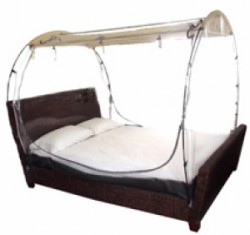
The Mont Blanc (4810.90 meters) is the highest peak in the Alps. The summit is on the border between France and Italy. It is the dream of many to admire the view on top of this summit. A moment to remember. But not everyone makes it to the top. Thorough preparation is particularly important.
Let yourself be properly informed by a recognized mountain guide agency. Besides the right information and good material, fitness is also very important. Someone in poor condition has little chance of success. Finally, there is the altitude sickness monster, every mountaineer's nightmare.
What is altitude sickness or Altitude Mountain Sickness?
Altitude sickness is simply an umbrella term for acute altitude sickness (AMS), cerebral oedema and pulmonary oedema caused by the high altitude.
Acute altitude sickness can occur due to insufficient adaptation to the low oxygen pressure, which is present at high altitudes, and this by reaching that altitude too quickly.
Below is a table with the corresponding percentage of people who are confronted with (mild) altitude sickness per height:
These numbers are impressive. In practice, this means that more than half of Mont Blanc is affected by altitude sickness. A lot of climbers don't reach the top because of this.
How do you prevent altitude sickness?
Golden rule: As long as there are symptoms, one should not continue to rise! Don't get carried away by others. Health for everything!
- First stay a few days at a 'medium' height (+ 2000 m).
- Avoid sleeping aids and excessive use of alcohol. No smoking is very important!
- Above 3000m one rises a maximum of 500m per day to spend the night.
- Above 4500 m you can climb a maximum of 200 m per day
- Drinking enough is very important: at high altitudes you get dehydrated more easily. Drinking at least 3 liters and more is really necessary. Even if there is no feeling of thirst, because the loss of fluid through breathing increases strongly due to the slight hyperventilation. A good test for yourself is checking the color of the urine. This must remain clear.
- Eat enough with sufficient carbohydrates.
- Because of their menstrual periods, women are more likely to have anemia and can follow an iron-rich diet in preparation for their journey + take iron tablets.
Altitude tent
You can significantly reduce the risk of altitude sickness by acclimatising your body to the altitude in an altitude tent or on the couch with an altitude mask in the weeks before your expedition.
You can do this via the rental service from AltitudeDream.com
How does it work?
The higher in the mountains, the lower the air pressure will be and as a result fewer oxygen molecules are present on the same surface. This means that you inhale less oxygen on top of a mountain than at sea level. Getting less oxygen stimulates the body to adapt to this new situation. Over time, various systems such as breathing, transport in the blood (number of red blood cells) and oxygen uptake in the muscles have improved considerably. Result: The body is better prepared for the situation with the Mont Blanc expedition.
The high altitude tent uses this process and uses the same low oxygen air as if you were standing on top of a mountain at home. The altitude generator takes a small percentage of oxygen out of the normal air and pumps the remaining deoxygenated air into the altitude tent.
More info?
Please contact us. We have special programs in preparation for Mont Blanc. (4 weeks)


